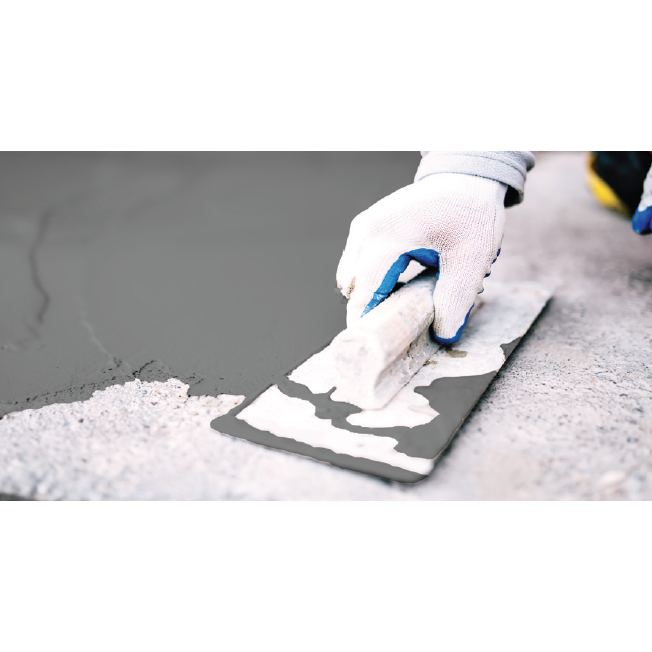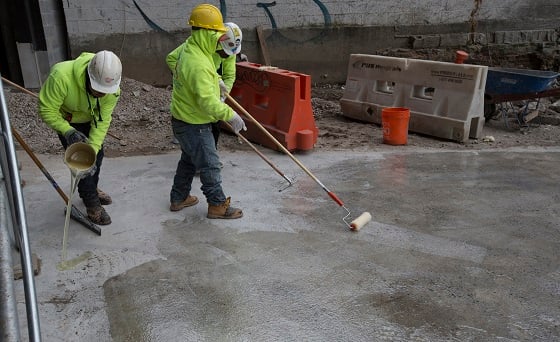Foundation waterproofing Omaha: Cost vs. Benefit
Wiki Article
How Waterproofing Works: A Comprehensive Take A Look At Strategies and Technologies
Waterproofing is vital for shielding frameworks from moisture-related damage. It entails numerous strategies and technologies that produce obstacles versus water invasion. Traditional techniques, such as compressed clay, coexist with modern developments like liquid-applied membranes. Understanding the subtleties of these methods is essential for reliable application. Nonetheless, the efficiency of any type of waterproofing remedy pivots not only on the strategies utilized but likewise on continuous maintenance and evaluation. What are the crucial aspects that influence long-term performance?Recognizing the Basics of Waterproofing
Waterproofing is a crucial procedure that protects frameworks from water intrusion, which can bring about significant damage over time. This method involves the application of various products and strategies created to create a barrier against dampness. The key goal is to stop water from permeating surface areas, which can create degeneration, mold development, and structural instability.Various elements influence the choice of waterproofing approach, consisting of the type of structure, its area, and environmental problems. Understanding the physics of water movement and the residential or commercial properties of different products is vital in picking an efficient waterproofing solution.Effective waterproofing not just safeguards buildings however likewise improves their long life and integrity. Usually, it is integrated right into the style stage of building to ensure complete defense. As understanding of water-related concerns grows, the value of understanding waterproofing principles ends up being progressively clear to architects, contractors, and residential property proprietors alike.Conventional Waterproofing Techniques
Typical waterproofing approaches have been made use of for centuries, depending on reliable techniques and materials to protect structures from water damages. One of the oldest methods includes the use of clay, which, when compressed, produces a natural barrier versus moisture. Additionally, asphalt, a sticky, black material acquired from petroleum, has been utilized for its water-resistant residential or commercial properties, often related to roof coverings and foundations.Another strategy includes the application of lime-based plasters, which give a breathable layer that enables dampness to get away while avoiding water access. Thatch roofing, a conventional technique still seen in some cultures, provides excellent waterproofing as a result of its snugly packed straw layers.Moreover, using rock and brick has been prominent, as these products are inherently resistant to water when properly installed. In general, conventional waterproofing techniques highlight the value of picking proper products and building practices to improve resilience versus water intrusion.Modern Waterproofing Technologies
Improvements in contemporary waterproofing innovations have actually transformed the means structures are safeguarded from water damages. Innovative methods such as liquid-applied membranes and innovative sealants have actually improved the performance and versatility of waterproofing options. These innovations enable seamless application, decreasing the risk of leakages and making certain detailed protection over complex surfaces.Moreover, the assimilation of clever innovations, such as dampness sensing units and automated surveillance systems, allows real-time analysis of waterproofing performance. This aggressive technique helps with timely upkeep and reduces long-lasting repair costs.Additionally, developments in spray-applied finishes use quick application and outstanding adhesion, adapting to various substrates while providing robust defense. Strategies like polymer-modified systems even more boost versatility and resilience, making them suitable for varied settings. Overall, modern waterproofing innovations not only minimize water intrusion but additionally add to the durability and sustainability of frameworks, noting a considerable shift in the industry.Materials Made Use Of in Waterproofing
The performance of waterproofing solutions greatly counts on the products utilized in their application. Various materials are employed to produce barriers against water ingress, each with unique buildings matched for various environments. Commonly made use of products consist of membrane layers, layers, and sealants.Liquid-applied membranes, usually made from polyurethane or acrylic, develop a seamless obstacle that adapts to complicated surface areas. Sheet membrane layers, commonly created from rubber or thermoplastic, deal resilience and are perfect for larger areas. Additionally, cementitious waterproofing materials, composed of cementitious compounds, provide exceptional bond and flexibility.Sealants made from silicone or polyurethane are necessary for joints and seams, making sure extensive security. Innovative materials, such as geo-composite membranes, integrate several features, boosting performance. Generally, the over at this website choice of waterproofing products is important in attaining lasting and effective water resistance, customized to certain task demands and ecological problems.
Typical Applications of Waterproofing
Waterproofing plays a crucial duty in different fields, making sure the longevity and honesty of frameworks. Usual applications consist of domestic services that shield homes, commercial facilities that safeguards services, and commercial settings that require robust defense against wetness. Recognizing these applications highlights the value of waterproofing in preserving both safety and security and performance throughout various atmospheres.Residential Waterproofing Solutions
Numerous property owners face difficulties with moisture breach, making efficient property waterproofing options essential. Different approaches exist to resolve this issue, including inside and outside waterproofing systems. Inside services usually entail the application of sealants and coverings to basement walls, which assist avoid water seepage. check my source Exterior methods typically include the installation of water drainage systems and waterproof membranes that divert water far from the foundation.Additionally, homeowners may think about sump pumps to remove water accumulation and dehumidifiers to control humidity degrees. Proper grading and using gutters likewise play an essential role in managing water flow around the home. By implementing these methods, homeowners can substantially lower the threat of water damage and mold and mildew development, ensuring a dry and safe living setting.
Commercial Facilities Protection
Efficient waterproofing options play a crucial duty in the security of business framework. Water Solutions Omaha. These methods are important for securing structures, vehicle parking structures, and bridges from water damage, which can compromise structural integrity and lead to costly fixings. Common applications include the installment of membrane layers, finishes, and sealers that create obstacles versus wetness infiltration. Locations such as cellars, roofs, and exterior wall surfaces are frequently prioritized to assure durability and longevity. In addition, waterproofing systems can enhance power effectiveness by stopping water-related problems that may cause mold and mildew growth and wear and tear. By executing durable waterproofing steps, home owners can safeguard their investments and maintain operational performance, eventually adding to the overall sustainability of commercial centersIndustrial Applications Review
While numerous fields deal with one-of-a-kind difficulties, the need for reputable waterproofing services remains a continuous in industrial applications. Industries such as manufacturing, building and construction, and energy commonly encounter settings where moisture direct exposure can jeopardize structural integrity and functional efficiency. In making centers, waterproofing is important for protecting machinery and products from water damages. In building and construction, it safeguards structures and cellars versus groundwater seepage. The power field counts on waterproofing for the protection of tools in hydroelectric plants and offshore structures. Furthermore, food processing industries utilize waterproofing to ensure hygiene and compliance with security requirements. In general, effective waterproofing remedies are vital for boosting durability, security, and performance throughout various commercial settings.
Upkeep and Durability of Waterproofing Solutions
Waterproofing options are developed to provide long-term defense against dampness intrusion, normal maintenance is vital to assure their efficiency and long life. Routine assessments play a significant role in determining prospective problems such as splits, peeling off, or signs of water damage. Attending to these issues promptly can protect against further wear and tear and costly repairs.Additionally, cleaning up the surface area of waterproofed locations aids get rid of dust and debris that might jeopardize the honesty of the waterproofing barrier. It's likewise suggested to reapply safety read review layers or sealers as recommended by suppliers to keep suitable efficiency. Environmental variables, such as UV direct exposure and extreme weather condition problems, can influence the lifespan of waterproofing products, making routine assessment crucialFrequently Asked Questions
Can Waterproofing Be Applied in Winter?
The question of applying waterproofing in chilly weather increases worries concerning adhesion and healing. Numerous items may not execute at their ideal in low temperature levels, demanding careful choice and factor to consider of certain guidelines for efficient application.Exactly How Long Does Waterproofing Normally Last?
The period of waterproofing performance varies based on materials and ecological factors. Generally, it can last from five to 10 years, but regular maintenance and examinations are vital to assure peak performance and durability.Is DIY Waterproofing Effective and Safe?
The performance and safety and security of do it yourself waterproofing depend upon various elements, including material top quality and application method. While some people accomplish satisfactory outcomes, others might run into issues that endanger long-lasting defense and structural integrity.What Are the Indications of Failing Waterproofing?
Indicators of falling short waterproofing consist of noticeable water discolorations, peeling paint, mold and mildew growth, mildewy smells, and moisture in wall surfaces or ceilings - Water Solutions. These indicators suggest compromised obstacles, requiring punctual examination and prospective remediation to stop more damageExactly how Do I Choose the Right Waterproofing Service Provider?

Report this wiki page